Xingwei Zhong
Constrained Coding and Deep Learning Aided Threshold Detection for Resistive Memories
Nov 19, 2024Abstract:Resistive random access memory (ReRAM) is a promising emerging non-volatile memory (NVM) technology that shows high potential for both data storage and computing. However, its crossbar array architecture leads to the sneak path problem, which may severely degrade the reliability of data stored in the ReRAM cell. Due to the complication of memory physics and unique features of the sneak path induced interference (SPI), it is difficult to derive an accurate channel model for it. The deep learning (DL)-based detection scheme \cite{zhong2020sneakdl} can better mitigate the SPI, at the cost of additional power consumption and read latency. In this letter, we first propose a novel CC scheme which can not only reduce the SPI in the memory array, but also effectively differentiate the memory arrays into two categories of sneak-path-free and sneak-path-affected arrays. For the sneak-path-free arrays, we can use a simple middle-point threshold detector to detect the low and high resistance cells of ReRAM. For the sneak-path-affected arrays, a DL detector is first trained off-line (prior to the data detection of ReRAM). To avoid the additional power consumption and latency introduced by the DL detector, we further propose a DL-based threshold detector, whose detection threshold can be derived based on the outputs of the DL detector. It is then utilized for the online data detection of all the identified sneak-path-affected arrays. Simulation results demonstrate that the above CC and DL aided threshold detection scheme can effectively mitigate the SPI of the ReRAM array and achieve better error rate performance than the prior art detection schemes, without the prior knowledge of the channel.
Deep Learning-Based Decoding of Linear Block Codes for Spin-Torque Transfer Magnetic Random Access Memory (STT-MRAM)
Oct 08, 2024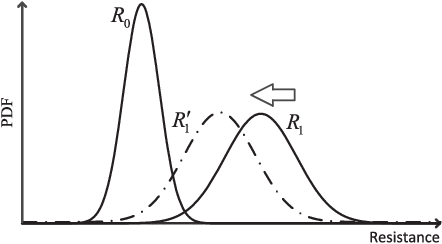
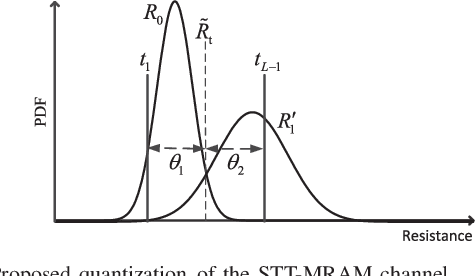
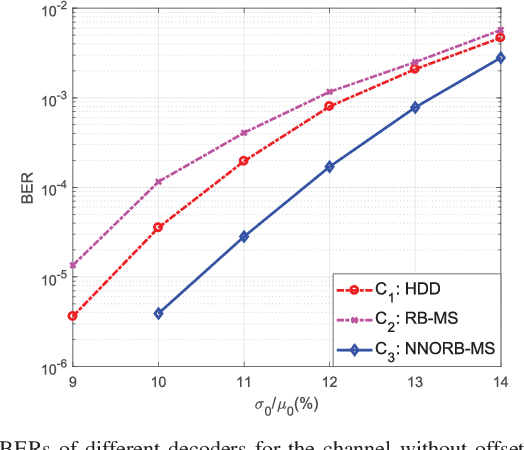
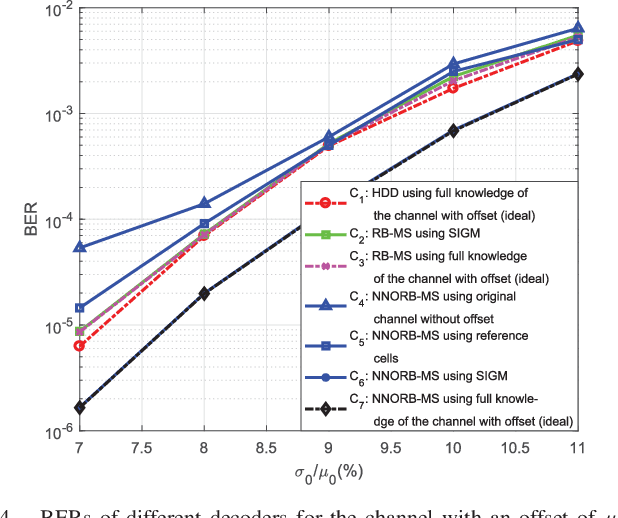
Abstract:Thanks to its superior features of fast read/write speed and low power consumption, spin-torque transfer magnetic random access memory (STT-MRAM) has become a promising non-volatile memory (NVM) technology that is suitable for many applications. However, the reliability of STT-MRAM is seriously affected by the variation of the memory fabrication process and the working temperature, and the later will lead to an unknown offset of the channel. Hence, there is a pressing need to develop more effective error correction coding techniques to tackle these imperfections and improve the reliability of STT-MRAM. In this work, we propose, for the first time, the application of deep-learning (DL) based algorithms and techniques to improve the decoding performance of linear block codes with short codeword lengths for STT-MRAM. We formulate the belief propagation (BP) decoding of linear block code as a neural network (NN), and propose a novel neural normalized-offset reliability-based min-sum (NNORB-MS) decoding algorithm. We successfully apply our proposed decoding algorithm to the STT-MRAM channel through channel symmetrization to overcome the channel asymmetry. We also propose an NN-based soft information generation method (SIGM) to take into account the unknown offset of the channel. Simulation results demonstrate that our proposed NNORB-MS decoding algorithm can achieve significant performance gain over both the hard-decision decoding (HDD) and the regular reliability-based min-sum (RB-MS) decoding algorithm, for cases without and with the unknown channel offset. Moreover, the decoder structure and time complexity of the NNORB-MS algorithm remain similar to those of the regular RB-MS algorithm.
Deep-Learning-Based Adaptive Error-Correction Decoding for Spin-Torque Transfer Magnetic Random Access Memory (STT-MRAM)
Oct 07, 2024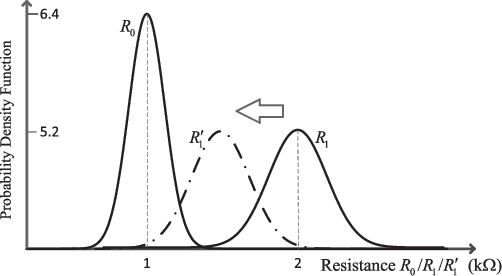
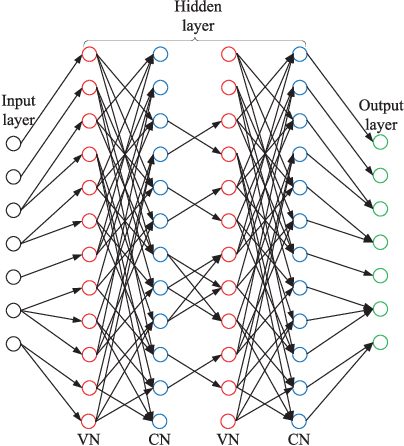
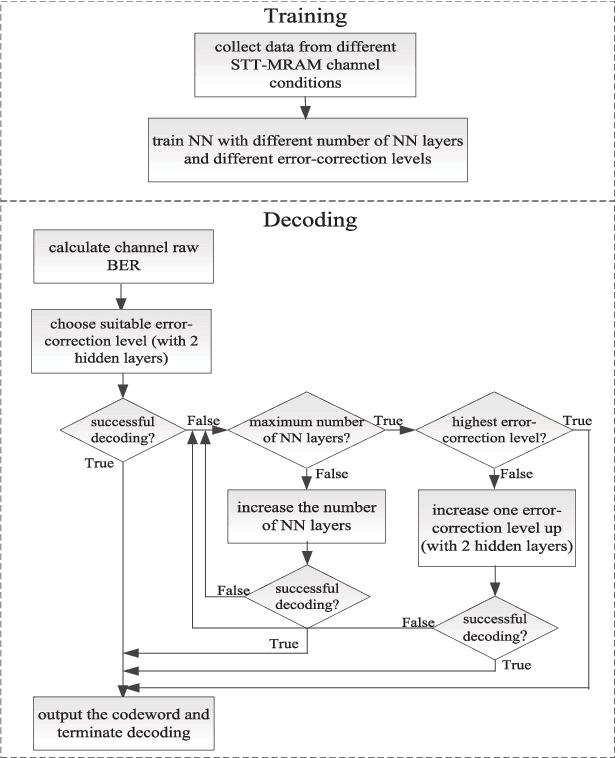
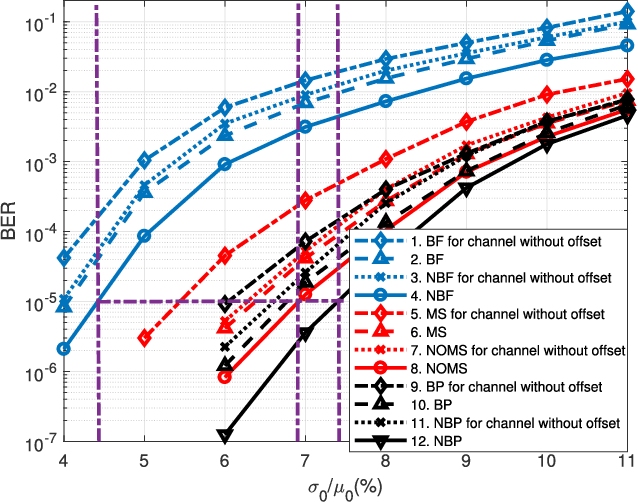
Abstract:Spin-torque transfer magnetic random access memory (STT-MRAM) is a promising emerging non-volatile memory (NVM) technology with wide applications. However, the data recovery of STT-MRAM is affected by the diversity of channel raw bit error rate (BER) across different dies caused by process variations, as well as the unknown resistance offset due to temperature change. Therefore, it is critical to develop effective decoding algorithms of error correction codes (ECCs) for STT-MRAM. In this article, we first propose a neural bit-flipping (BF) decoding algorithm, which can share the same trellis representation as the state-of-the-art neural decoding algorithms, such as the neural belief propagation (NBP) and neural offset min-sum (NOMS) algorithm. Hence, a neural network (NN) decoder with a uniform architecture but different NN parameters can realize all these neural decoding algorithms. Based on such a unified NN decoder architecture, we further propose a novel deep-learning (DL)-based adaptive decoding algorithm whose decoding complexity can be adjusted according to the change of the channel conditions of STT-MRAM. Extensive experimental evaluation results demonstrate that the proposed neural decoders can greatly improve the performance over the standard decoders, with similar decoding latency and energy consumption. Moreover, the DL-based adaptive decoder can work well over different channel conditions of STT-MRAM irrespective of the unknown resistance offset, with a 50% reduction of the decoding latency and energy consumption compared to the fixed decoder.
Neural Network-Based Dynamic Threshold Detection for Non-Volatile Memories
Feb 17, 2019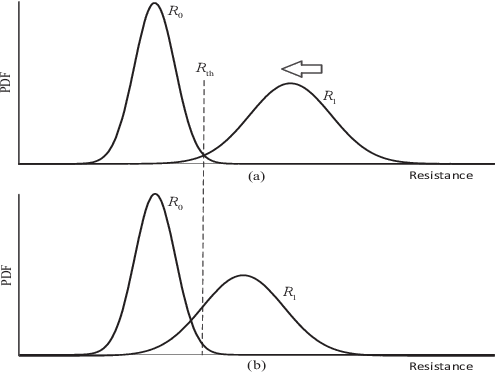
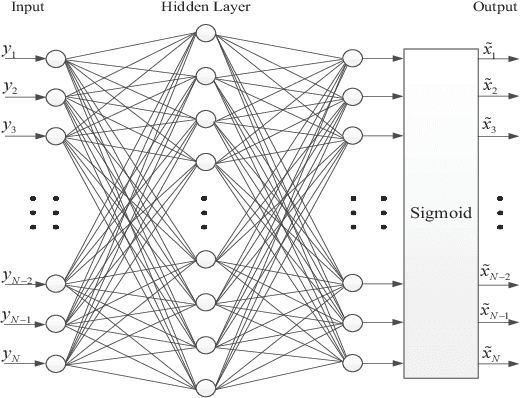
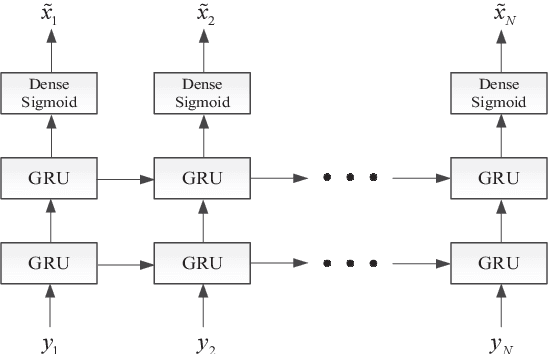
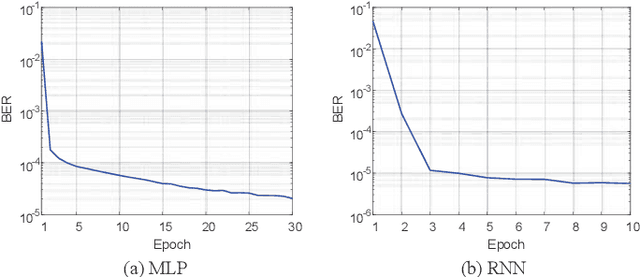
Abstract:The memory physics induced unknown offset of the channel is a critical and difficult issue to be tackled for many non-volatile memories (NVMs). In this paper, we first propose novel neural network (NN) detectors by using the multilayer perceptron (MLP) network and the recurrent neural network (RNN), which can effectively tackle the unknown offset of the channel. However, compared with the conventional threshold detector, the NN detectors will incur a significant delay of the read latency and more power consumption. Therefore, we further propose a novel dynamic threshold detector (DTD), whose detection threshold can be derived based on the outputs of the proposed NN detectors. In this way, the NN-based detection only needs to be invoked when the error correction code (ECC) decoder fails, or periodically when the system is in the idle state. Thereafter, the threshold detector will still be adopted by using the adjusted detection threshold derived base on the outputs of the NN detector, until a further adjustment of the detection threshold is needed. Simulation results demonstrate that the proposed DTD based on the RNN detection can achieve the error performance of the optimum detector, without the prior knowledge of the channel.
 Add to Chrome
Add to Chrome Add to Firefox
Add to Firefox Add to Edge
Add to Edge